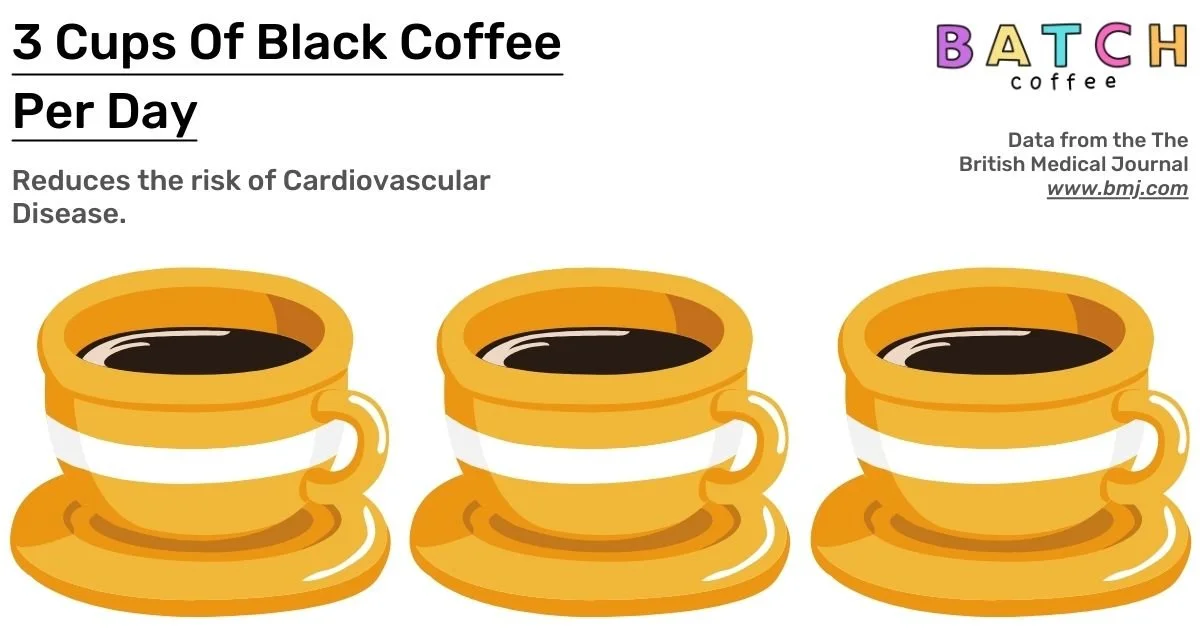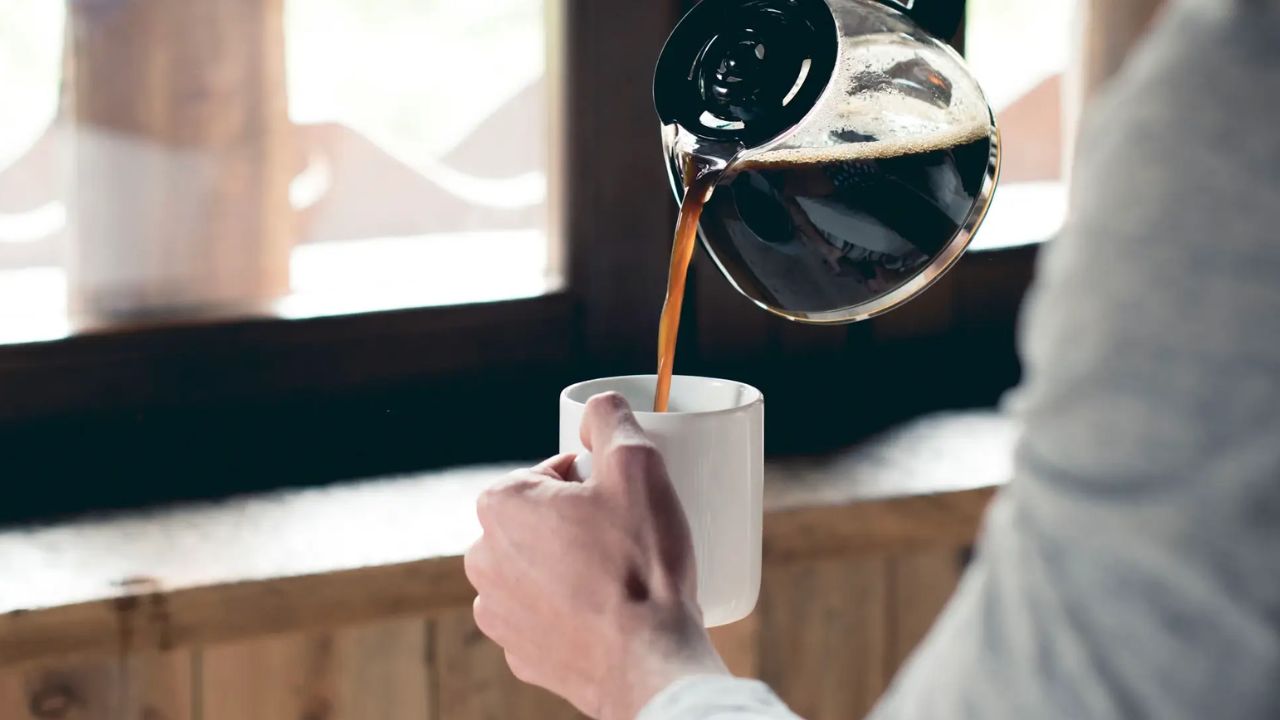How Many Calories in a Cup of Coffee: Quick Facts

A plain cup of black coffee contains about 2 calories. Adding sugar, milk, or cream increases the calorie count.
Coffee is a popular beverage enjoyed by millions worldwide. It offers a rich flavor and a quick energy boost. Black coffee is low in calories, making it a suitable choice for those watching their weight. Adding extras like sugar, cream, or flavored syrups can significantly increase the calorie content.
Understanding the caloric impact of these additions can help make better dietary choices. Many opt for black coffee to maintain a low-calorie intake while still enjoying their favorite drink. Whether it’s a morning ritual or an afternoon pick-me-up, coffee remains a beloved and versatile drink.
Caloric Content In A Cup Of Coffee
Many people start their day with a cup of coffee. But how many calories does it contain? This depends on whether you drink it plain or with additives. Let’s explore the caloric content in different types of coffee.
Plain Black Coffee
Plain black coffee is a favorite for many. It is low in calories. A standard 8-ounce cup has about 2 calories. This makes it a great choice for those watching their weight. The low-calorie count is because it is mostly water.
Coffee With Additives
Coffee can change a lot when you add things to it. Common additives include sugar, milk, and cream. Each of these increases the calorie count. Let’s look at some examples:
| Additive | Calories (per serving) |
|---|---|
| 1 teaspoon of sugar | 16 |
| 1 tablespoon of whole milk | 9 |
| 1 tablespoon of cream | 52 |
| 1 tablespoon of flavored syrup | 20 |
Adding just one teaspoon of sugar and one tablespoon of cream to your coffee can raise its calorie content to 70 calories. This is a significant increase from plain black coffee.
To make healthier choices, you can:
- Use low-fat milk instead of cream
- Choose natural sweeteners like stevia
- Limit the use of flavored syrups
Understanding the caloric content of your coffee can help you make better decisions. Keep your coffee low-calorie to stay healthy and fit.
Factors Influencing Calorie Count
Coffee is a favorite drink for many. The calorie count in a cup of coffee can change based on several factors. Understanding these factors can help you make healthier choices.
Size Of The Cup
The size of your coffee cup greatly affects the calorie count. A larger cup will naturally have more calories. Here is a simple table to illustrate:
| Size | Calories |
|---|---|
| 8 oz (small) | 2 |
| 12 oz (medium) | 3 |
| 16 oz (large) | 4 |
Remember, the more coffee you drink, the more calories you consume.
Type Of Coffee Bean
The type of coffee bean also impacts the calorie count. Different beans have different nutritional content. Here are some common types:
- Arabica: Lower in calories, often 2 calories per cup.
- Robusta: Slightly higher in calories, around 3 calories per cup.
Arabica beans are popular for their mild flavor. Robusta beans are stronger and more bitter.
Choosing the right coffee bean can help manage your calorie intake. Always check the type of bean used in your coffee.
Add-ins That Increase Calories
Many enjoy a simple cup of coffee for its low calories. Yet, adding extras can quickly increase the calorie count. Let’s explore common add-ins and their impact on your coffee’s calorie content.
Sugar And Sweeteners
Adding sugar or sweeteners can significantly increase the calories in coffee.
- One teaspoon of sugar: 16 calories
- One tablespoon of honey: 64 calories
- One packet of artificial sweetener: 0-5 calories
While artificial sweeteners have fewer calories, they may affect taste and health.
Cream And Milk Varieties
Different creams and milk add varying amounts of calories to coffee.
| Type | Calories per Tablespoon |
|---|---|
| Whole Milk | 9 calories |
| Skim Milk | 5 calories |
| Half-and-Half | 20 calories |
| Heavy Cream | 52 calories |
Using whole milk adds fewer calories than heavy cream. Skim milk is even lower in calories but less creamy.
Non-dairy alternatives also vary in calorie content:
| Type | Calories per Tablespoon |
|---|---|
| Almond Milk | 2 calories |
| Soy Milk | 4 calories |
| Coconut Milk | 5 calories |
Choose your milk or cream based on your calorie goals and taste preferences.
Calories In Popular Coffee Beverages
Ever wondered how many calories are in your coffee? Different coffee beverages have different calorie counts. This guide explains the calories in popular coffee drinks. Let’s dive in!
Espresso
Espresso is a strong, small coffee shot. It contains very few calories.
- One shot of espresso: 2 calories
Latte
A latte is a creamy coffee drink. It has more calories than espresso.
| Drink | Calories |
|---|---|
| Small Latte (8 oz) | 120 calories |
| Medium Latte (12 oz) | 180 calories |
| Large Latte (16 oz) | 240 calories |
Cappuccino
Cappuccino is similar to a latte but with more foam.
- Small Cappuccino (6 oz): 60 calories
- Medium Cappuccino (12 oz): 120 calories
- Large Cappuccino (16 oz): 180 calories
Frappuccino
Frappuccino is a sweet, blended coffee drink. It has the most calories.
- Small Frappuccino (12 oz): 250 calories
- Medium Frappuccino (16 oz): 400 calories
- Large Frappuccino (24 oz): 500 calories
Impact Of Brewing Methods
Different brewing methods can change the calorie content of your coffee. Each technique has its unique way of extracting flavors and nutrients. This can affect the number of calories you consume.
Drip Brew
Drip brew is the most common coffee-making method. It involves pouring hot water over ground coffee beans. The water then filters through a paper or metal filter. The result is a clean, smooth cup of coffee. A standard cup of drip-brewed coffee has about 2 calories.
French Press
The French Press method uses a plunger to push water through coffee grounds. This method allows more oils and sediments to stay in the coffee. A cup of French Press coffee has around 4 calories because of the extra oils.
Cold Brew
Cold Brew coffee is made by steeping coffee grounds in cold water for 12-24 hours. This method produces a less acidic coffee concentrate. A cup of Cold Brew coffee has about 5 calories since it is often stronger and richer.
| Brewing Method | Calories per Cup |
|---|---|
| Drip Brew | 2 calories |
| French Press | 4 calories |
| Cold Brew | 5 calories |
Low-calorie Alternatives For Coffee Lovers
For those who enjoy coffee but want to keep calories low, there are many options. Switching to low-calorie alternatives can make a big difference. You can still enjoy your favorite drink without worrying about extra calories. Below are some excellent options to consider.
Alternative Sweeteners
Many people love their coffee sweet. Traditional sugar adds extra calories. There are low-calorie sweeteners that you can use instead.
- Stevia: A natural, zero-calorie sweetener from plant leaves.
- Monk Fruit: Another natural option with no calories.
- Erythritol: A sugar alcohol with very few calories.
These sweeteners can replace sugar in your coffee. They provide the sweetness you crave without the extra calories.
Low-fat Milk Options
Milk and cream can add many calories to coffee. Switching to low-fat or non-dairy milk can help.
| Milk Type | Calories (per cup) |
|---|---|
| Skim Milk | 80 |
| Almond Milk (unsweetened) | 30 |
| Soy Milk (unsweetened) | 80 |
| Coconut Milk (unsweetened) | 45 |
These milk options have fewer calories than whole milk or cream. They can still provide a creamy texture to your coffee.
Switching to low-calorie alternatives is easy and smart. Enjoy your coffee without extra calories.
Understanding Coffee Labels
Understanding coffee labels can be confusing. Many terms and numbers seem unclear. Knowing what each label means helps you make healthier choices.
Nutritional Information
Most coffee labels list the nutritional information. This includes calories, fats, sugars, and proteins.
Here is a typical breakdown of a cup of black coffee:
| Nutrient | Amount |
|---|---|
| Calories | 2 |
| Fat | 0g |
| Sugar | 0g |
| Protein | 0g |
Black coffee is low in calories. But the numbers can change with added milk, sugar, or cream.
Misleading Marketing Terms
Labels often use misleading marketing terms. These terms can make coffee seem healthier than it is. Here are a few to watch out for:
- “Sugar-Free” – This does not mean calorie-free.
- “Low-Fat” – This might still have high calories from sugar.
- “Natural” – This term does not always mean healthy or low-calorie.
Always read the full nutrition label. Do not rely on the marketing terms alone.
Strategies To Reduce Caloric Intake
Drinking coffee can be a low-calorie joy. But some add-ins can boost the calorie count. Here are some strategies to keep your coffee healthy and low-calorie.
Portion Control
Controlling your coffee portion is key. Use a smaller cup to limit intake. A standard cup of black coffee has only 2 calories. Adding sugar or cream increases the count. Below is a simple table to help you understand this:
| Ingredient | Calories per Serving |
|---|---|
| Black Coffee (8 oz) | 2 |
| Sugar (1 tsp) | 16 |
| Cream (1 tbsp) | 52 |
Mindful Add-in Selection
Choose your add-ins wisely. Opt for healthier alternatives. Here are some tips:
- Use low-fat milk: It has fewer calories than whole milk.
- Sweeten with stevia: A natural, calorie-free sweetener.
- Skip the whipped cream: It adds unnecessary calories.
Below is a comparison between common add-ins:
| Add-In | Calories |
|---|---|
| Whole Milk (1 oz) | 18 |
| Low-fat milk (1 oz) | 12 |
| Stevia (1 packet) | 0 |
| Whipped Cream (1 tbsp) | 52 |
Making small changes can have a big impact. Enjoy your coffee without the extra calories!
Faqs About Coffee And Calories
Curious about how many calories are in a cup of coffee? This section answers common questions. Learn how coffee affects your diet and health. Discover useful tips to enjoy your coffee without guilt.
Does Black Coffee Break Fast?
Many people ask, “Does black coffee break a fast?” The simple answer is no. Black coffee contains very few calories. It typically has about 2-5 calories per cup. These calories are not enough to break your fast.
Black coffee can even help during fasting. It can reduce hunger pangs. It also provides a slight energy boost.
Can Coffee Boost Metabolism?
Another common query is, “Can coffee boost metabolism?” The answer is yes. Coffee contains caffeine, which is known to boost metabolism. Studies show that caffeine can increase metabolic rate by 3-11%.
This boost can help burn more calories throughout the day. Here are some key points:
- Caffeine stimulates the central nervous system.
- It increases the release of adrenaline.
- More adrenaline leads to higher fat burning.
Drinking coffee in moderation can support weight loss. But, avoid adding sugar or cream to keep calories low.
| Type of Coffee | Calories Per Cup |
|---|---|
| Black Coffee | 2-5 |
| With Milk | 30-50 |
| Latte | 150-250 |
Frequently Asked Questions
How Many Calories Does A Cup Of Black Coffee Have?
A cup of black coffee has approximately 2 calories. It’s a low-calorie beverage, ideal for those watching their intake.
How Many Calories In A Cup Of Coffee With Milk And Sugar?
A cup of coffee with milk and sugar typically contains around 30-60 calories. The exact amount depends on the quantities used.
How Many Calories In A Regular Cup Of Coffee?
A regular cup of black coffee has about 2 calories. Adding sugar, milk, or cream increases the calorie count.
How Many Calories Are In A Small Coffee With Milk?
A small coffee with milk typically contains around 30 to 50 calories, depending on the amount and type of milk used.
How Many Calories In Black Coffee?
Black coffee typically contains just 2 calories per cup.
Does Adding Sugar Increase Coffee Calories?
Yes, adding sugar significantly increases the calorie count of your coffee.
How Many Calories In Coffee With Milk?
A cup of coffee with milk can have 30-50 calories.
Is Coffee Without Sugar Low Calorie?
Yes, coffee without sugar is very low in calories.
Conclusion
Understanding the calorie content in a cup of coffee is essential for health-conscious individuals. Black coffee is almost calorie-free, making it a great choice. Adding milk, sugar, or cream can increase the calorie count significantly. Always check your coffee additions to maintain a balanced diet.


:max_bytes(150000):strip_icc()/black-coffee_annotated-dc9e981c8fec4d5a9ba5ad5887d06d57.jpg)










